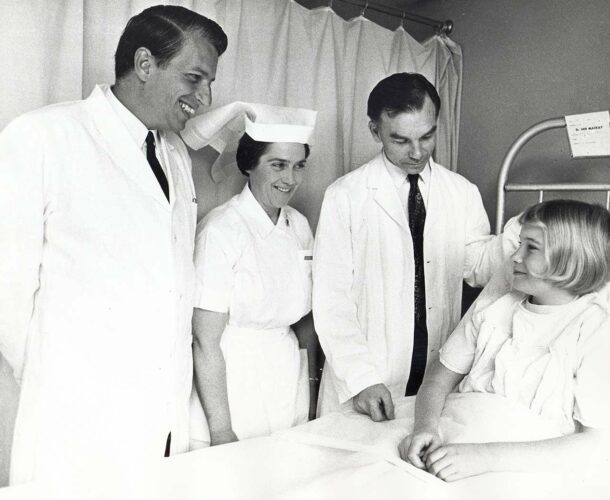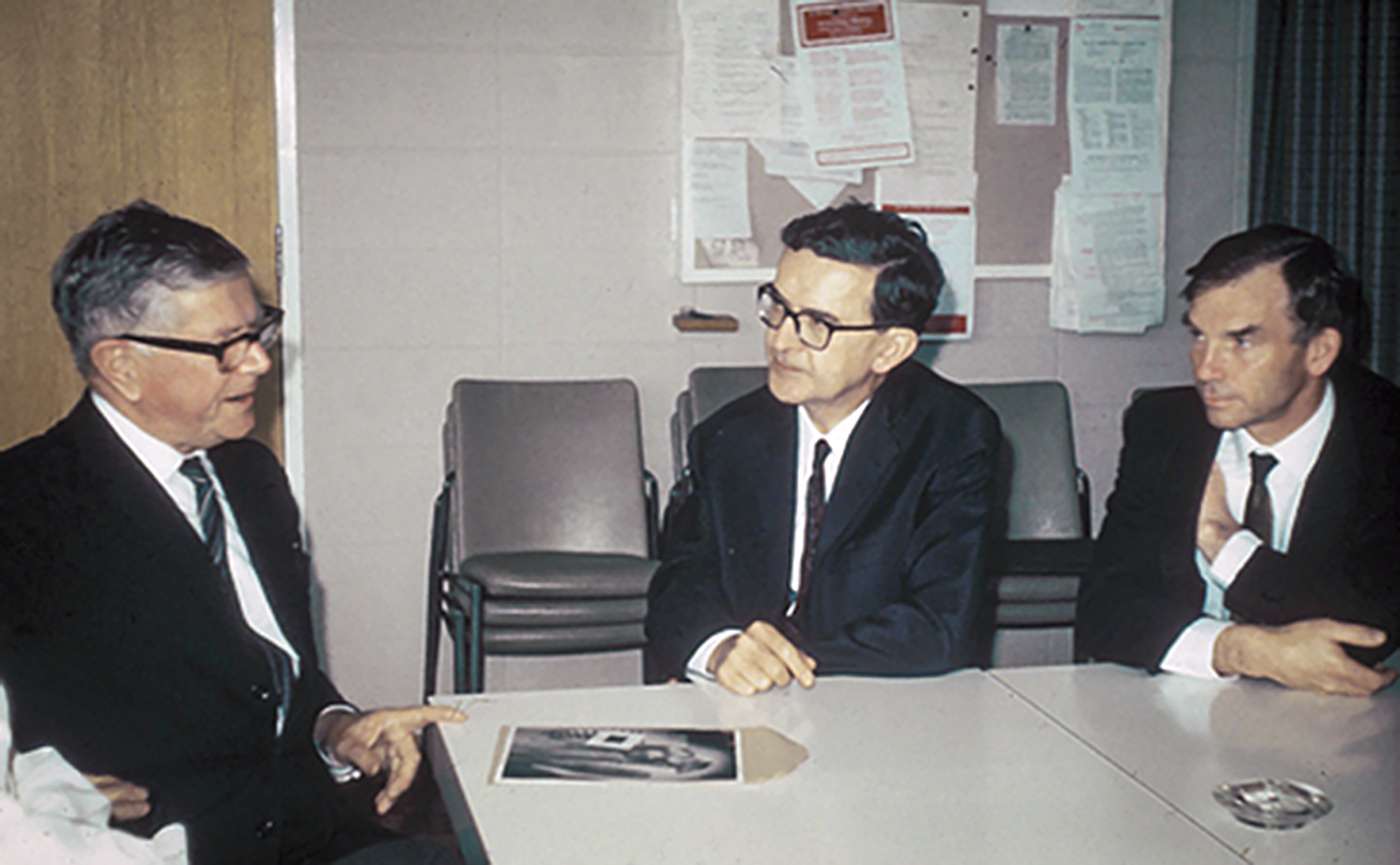Professor Ian Mackay was one of a small band of global pioneers of autoimmunity.
His research and clinical teams focused on autoimmune disorders of the stomach and liver, including autoimmune hepatitis. Referred to as chronic active hepatitis or lupoid hepatitis at the time, autoimmune hepatitis was a usually fatal liver disease, predominantly affecting young women.
The disease causes jaundice and bleeding that becomes progressively worse, with the patients lapsing into a coma. In the 1950s, the usual time from diagnosis to death was six months to two years.
Pioneering treatment
In 1956 Mackay and Carleton Gadjusek invented a test, called the autoimmune complement fixation test, that determined what they then called ‘chronic active hepatitis’ was in fact an autoimmune disease.
Ian Mackay pioneers treatment of autoimmune disease with a combination of steroids and an immunosuppressive drug called azathioprine, treatments that are still widely used today. In 1968 he publishes an extensive analysis of 30 patients with autoimmune hepatitis treated over a three-year period with either steroids or azathioprine.
As his colleagues and contemporaries wrote in a tribute to Mackay:
“He quite courageously gave immunosuppressive treatment to young women with AIH [autoimmune hepatitis] when immunosuppressive drugs were still crude preparations and, for this, his reward was not only dramatic improvement in the health of these women but also their greatly prolonged survival.”1
The results documented clearly for the first time that azathioprine is safe and effective for treating autoimmune hepatitis, and that the function of the liver improves with treatment.
Because steroids have nasty side-effects, particularly when used long-term, the research indicates that combining steroids and azathioprine could allow for lower doses of steroids to be used.
No longer a death sentence
These new treatments converted what had previously been a death sentence into an illness where most patients did well and led close to normal lives if carefully managed.
In 1979, Mackay published on the miraculous changes in the prognosis of autoimmune hepatitis in 73 cases seen by the Clinical Research Unit.
While up to 65 per cent of patients prior to 1958 died within 10 years of diagnosis, only seven per cent of those first diagnosed between 1959 and 1968 had died within 10 years, and even fewer in those diagnosed after 1968.
A second study in lupus
In a related study in 1973, Mackay and his team compare the effectiveness of azathioprine and another immunosuppressive drug, cyclophosphamide, for treating lupus (systemic lupus erythematosus or SLE. Neither drug proved clearly superior to the other. For SLE, both drugs were deemed to have at least an accessory role and the potential to be used with steroids as a treatment for lupus.






